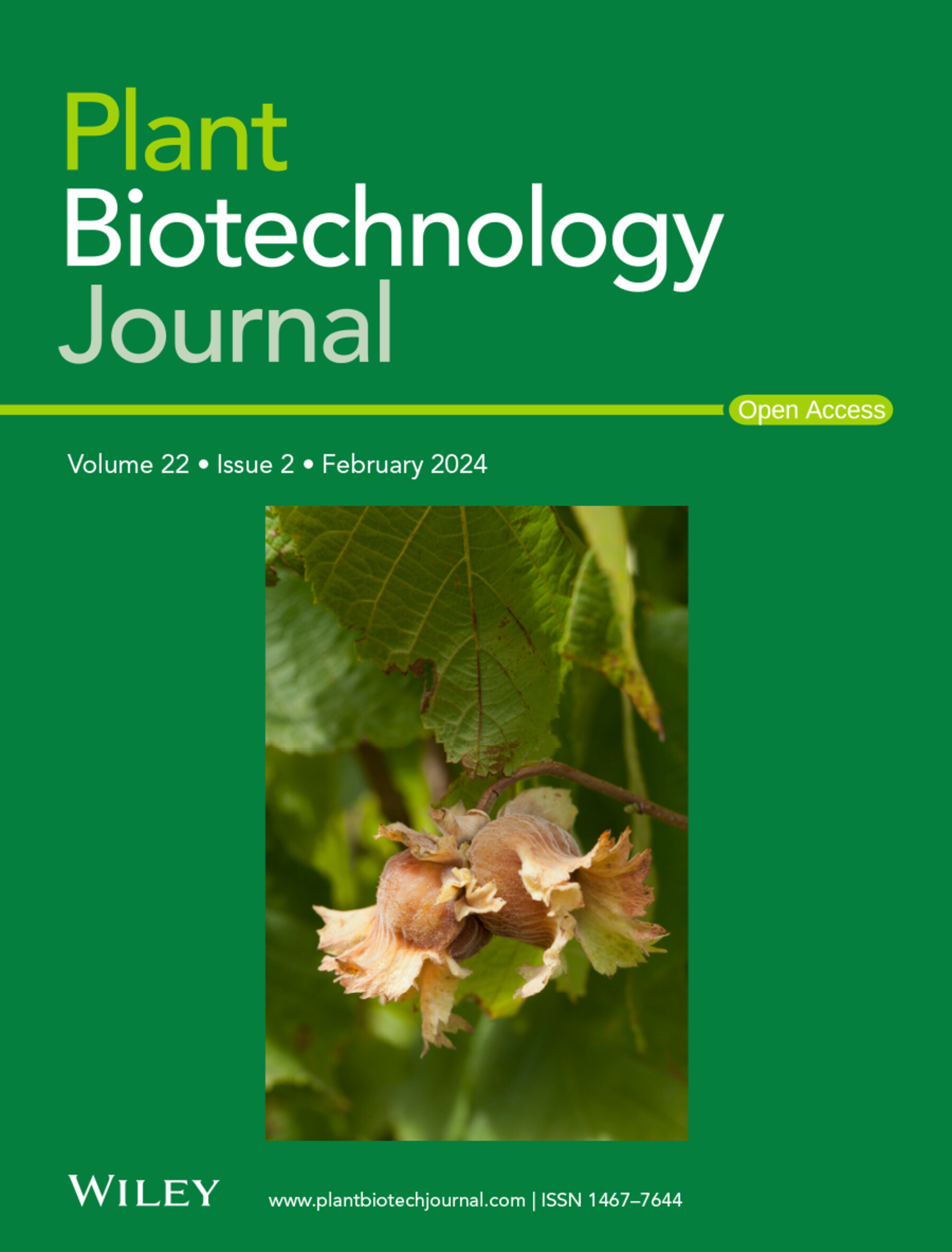TaSPX3 Enhances Wheat Resistance to Leaf Rust by Antagonising TaDi19‐Mediated Repression of Pathogenesis‐Related Genes
IF 10.5
1区 生物学
Q1 BIOTECHNOLOGY & APPLIED MICROBIOLOGY
引用次数: 0
Abstract
Wheat leaf rust, caused byTaSPX3通过拮抗TaDi19介导的发病相关基因抑制增强小麦对叶锈病的抗性
小麦叶锈病是由小麦锈病引起的,威胁着全球小麦生产,随着病原菌毒力的不断进化,产量损失进一步加剧。虽然已知含有Syg1/Pho81/Xpr1 (SPX)结构域的蛋白是磷酸盐稳态的调节因子,但它们在植物与病原体相互作用中的作用仍未得到充分研究。我们证明了小麦SPX家族基因TaSPX3在早期Pt感染和flg22处理中被快速诱导。遗传证据表明,TaSPX3是抗锈病的正调节因子,敲低系的敏感性增加,过表达系的抗性增强。通过酵母双杂交筛选,我们确定了锌指转录因子TaDi19‐1D是TaSPX3的直接相互作用因子。TaDi19‐1D通过直接启动子结合抑制发病相关(PR)基因(TaPR1, TaPR2, TaPR5)的表达,发挥负性免疫调节剂的作用。TaSPX3通过与TaDi19 - 1D的物理相互作用抵消了这种抑制,从而降低了PR基因的表达,增强了小麦对Pt的抗性。我们的研究结果揭示了一种新的TaSPX3 - TaDi19调节模块,该模块可以微调TaSPX3 - TaDi19的表达,为模式触发免疫(PTI)的机制提供了见解,并为培育持久的广谱抗病小麦品种提供了潜在的遗传靶点。
本文章由计算机程序翻译,如有差异,请以英文原文为准。
求助全文
约1分钟内获得全文
求助全文
来源期刊

Plant Biotechnology Journal
生物-生物工程与应用微生物
CiteScore
20.50
自引率
2.90%
发文量
201
审稿时长
1 months
期刊介绍:
Plant Biotechnology Journal aspires to publish original research and insightful reviews of high impact, authored by prominent researchers in applied plant science. The journal places a special emphasis on molecular plant sciences and their practical applications through plant biotechnology. Our goal is to establish a platform for showcasing significant advances in the field, encompassing curiosity-driven studies with potential applications, strategic research in plant biotechnology, scientific analysis of crucial issues for the beneficial utilization of plant sciences, and assessments of the performance of plant biotechnology products in practical applications.
 求助内容:
求助内容: 应助结果提醒方式:
应助结果提醒方式:


